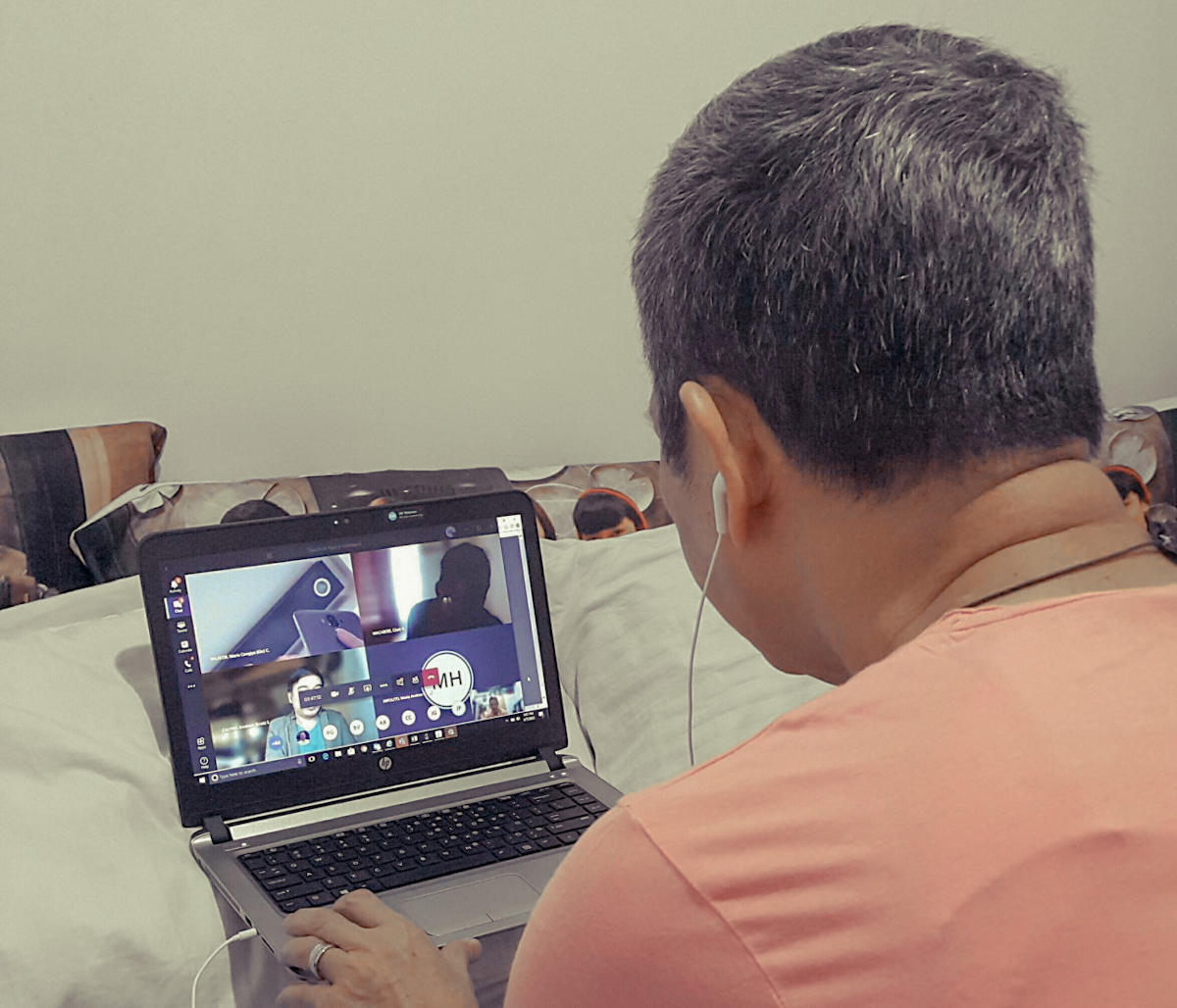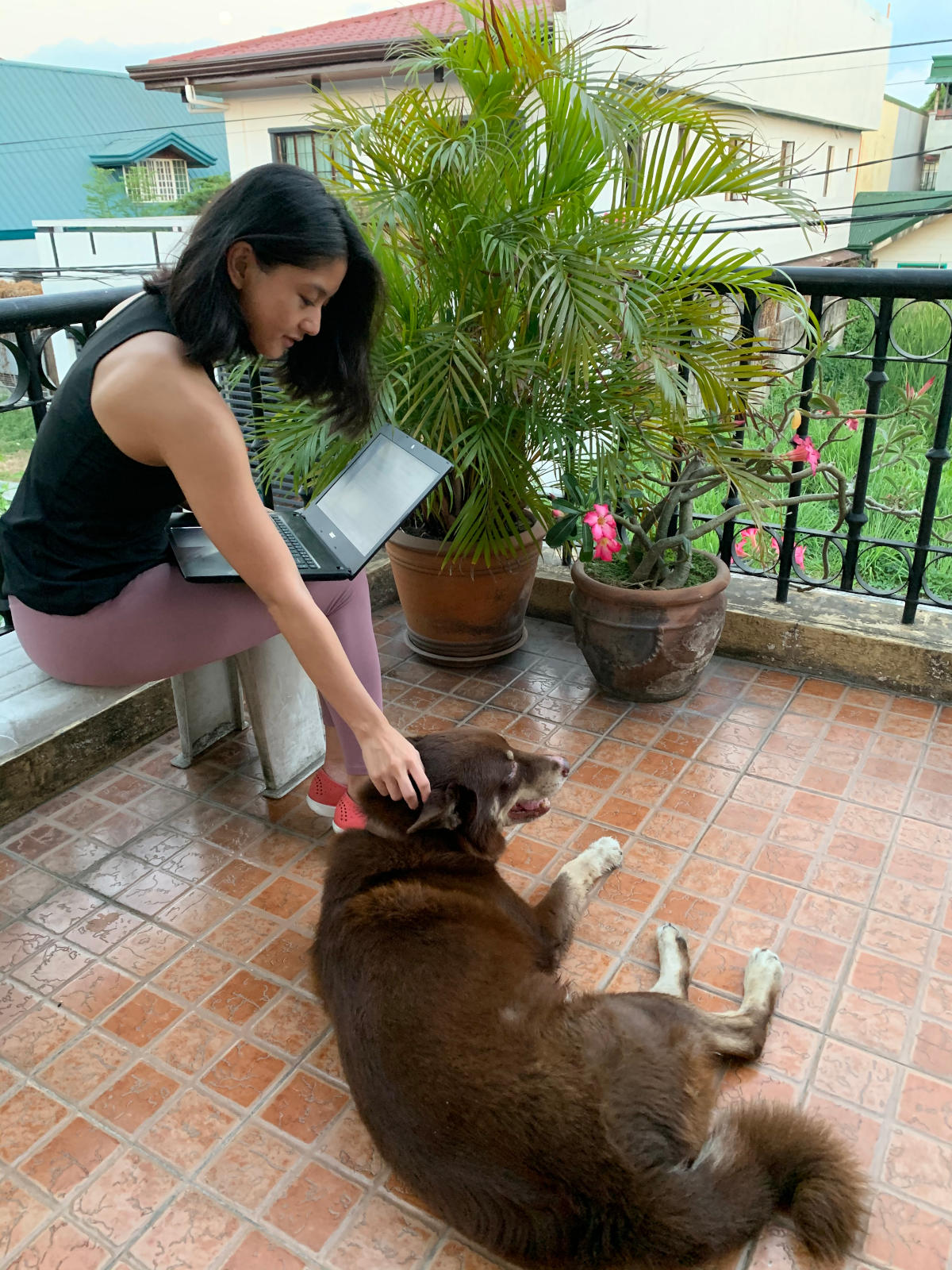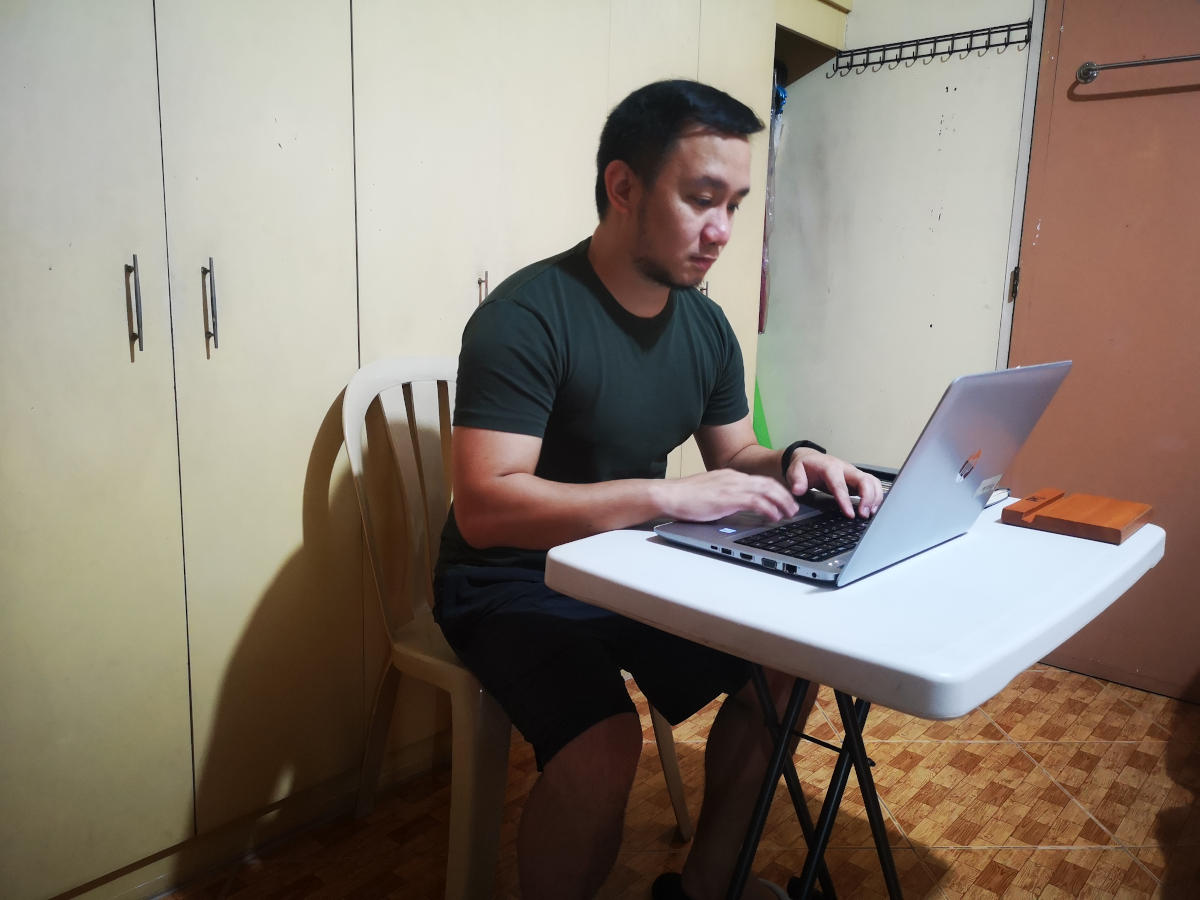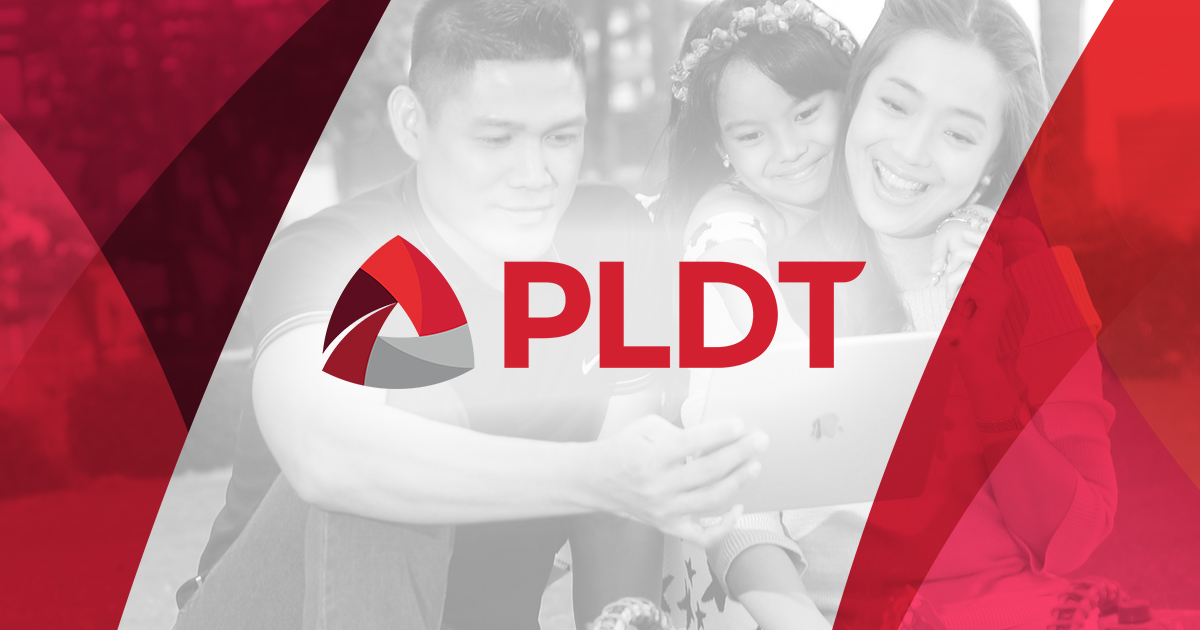

PLDT sales fulfillment specialist Bienvenido Gatchalian uses Microsoft Teams for easier communication and coordination with his colleagues while he works from home.
Despite the challenges posed by the COVID-19 pandemic, PLDT and Smart employees are among the many Filipino workers who continue to productively work amid the health crisis. As both companies were placed on a work-from-home arrangement, all employees rely on technology support to continue their work routine. This means meetings via Microsoft Teams and a quick turnaround of e-mail replies and instant messaging queries.
Employees from PLDT and Smart share their current work-from-home experiences as well as maximizing the use of collaboration tools such as Microsoft Teams.
These collaboration tools greatly help in terms of presentations and cascading information. Some of the advantages of these collaboration tools include a screen sharing mode where everyone in the video conference call can see the presentation and be on the same page; quick and real-time discussion on urgent matters and alignment; and being able to immediately send files and generate comments within various apps efficiently where correspondence is not just limited via e-mail.
According to Sr. Network Engineer Ma. Virginia Romero from the Network Facilities Convergence Solution Management, her division is responsible for the reservation of ports, cables and configuration for the provisioning of MSAN and OLTs as well as the issuance of naming convention for all networks. With the work-from-home in place, Romero said that she has learned to maximize the use of technology to help her in her line of work. “Within our team, we coordinate using Microsoft Teams and Viber. Mostly, meetings and coordination with other departments and groups happen via Microsoft Teams too,” Romero said.
Alyssa Chuidian from the Smart Postpaid Brand Marketing Team admits that initially it was a challenge to segment one's time for work and home. Eventually, she learned to adapt to the work-from-home arrangement while having work-life balance.
For Bienvenido Gatchalian, a Sales Fulfillment Specialist for the GMM North/East Home Sales, nothing changes in terms of his work routine aside from having to work from home. “My line of work requires a lot of coordination and follow-ups, especially with our sales and operations partners. Currently, we use Microsoft Teams as well as Viber for easier communication,” Gatchalian said.
There is no doubt that we are facing a new normal. As everyone adjusts to this new reality, it might initially be a challenge to segment one’s work and home time. Alyssa Chuidian from the Smart Postpaid Brand Marketing Team shares her work routine from home. Like Romero and Gatchalian, Chuidian also maximizes the use of Microsoft Teams. “I have downloaded and used some collaboration tools: Microsoft Teams, Google Duo and Google Hangouts. This is separate from the chat groups in Telegram, Viber, Microsoft Teams chat and Whatsapp,” Chuidian said.
According to Chuidian, her division is in-charge of developing revenue generating programs and campaigns that drive the Smart postpaid business. Specifically, she handles the overall end to end marketing for projects that drive data & plan usage, content partnerships, brand equity building and rewards for Smart Signature. “As a team, we collaborate daily on work groups, e-mail and video conference calls as needed. Part of our job requires a lot of collaboration between internal cross-functional teams and third party agencies, but so far the work-from-home arrangement has not slowed anything down in terms of work timings and campaign roll outs,” Chuidian said.
As a Manager from the People Group, Cedric Galagala is among the employees who maximizes Microsoft Teams in his work. With the work-from-home arrangement, Galagala admits that one of its advantages includes a rise in productivity as things are getting done faster through the use of technology.

Cedric Galagala of Smart HR says increased productivity and is one of the positive effects of the work-from-home arrangement
A Medical Liaison under the Medical Services Department of PLDT, Dr. Orven Bernardo shared that while the work-from-home arrangement has been in place since March 16, there are still some staff members manning the PLDT clinics both in lockdown sites as well as in other zones and areas.
According to Bernardo, as Filipinos now heavily rely on technology to cope in this new reality, telemedicine also becomes a platform in delivering a more efficient service amid the health crisis. “Telemedicine is a good tool for probable diagnosis for simple cases or cases that may escalate to a heightened urgency. It gives the doctor a visual view of the patient, and not just a verbal account which helps very much in assessing the condition and hopefully giving a correct advice,” Bernardo said.
“At this point, it will not replace a good physical examination, but with the proper guidelines and matrices, it can give good advice to patients who can’t see their doctor physically at that moment in time,” Bernardo added.
Admittedly, working in a physical environment is an entirely different experience from working-from-home. With the extension of the Luzon-wide enhanced community quarantine, more Filipinos will continue to rely heavily on the accessibility and connectivity of the Internet as they work from home. This current situation has accelerated the nation’s digital transformation as more companies adapt to the new normal — one that enables the narrative of a new digital lifestyle.


